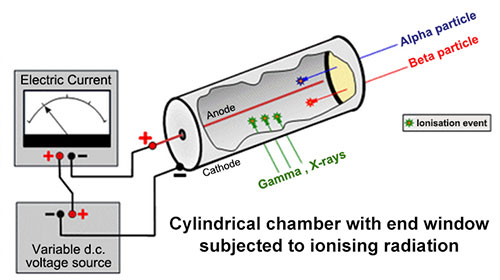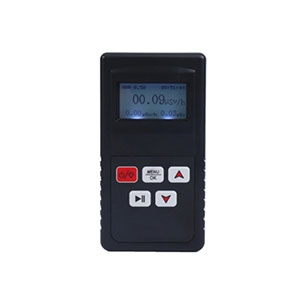How Do you Use a Nuclear Radiation Detector?
Nuclear radiation refers to the radiation emitted by radioactive substances in nature or human activities, which has a certain degree of harm to human health and the environment. In order to monitor and control the level of nuclear radiation, scientists have invented a nuclear radiation testing instrument. Nuclear radiation testers are devices that use ionization, excitation effects, or other physical and chemical changes caused by radiation in gases, liquids, or solids for radiation detection. They are widely used in fields such as nuclear energy, healthcare, and environmental protection. The following ATO industrial automation will introduce the working principle and usage methods of nuclear radiation testing equipment to help everyone use and understand it correctly.
Working Principle of Nuclear Radiation Detector
Nuclear radiation detection technology utilizes the effects of emitted α, β, γ, and other rays from radioactive isotopes on the material being tested, such as scattering, absorption, ionization, or causing the material to be excited and emit new rays (such as X-rays). By measuring parameters such as ionization level or the intensity of rays reflected after interaction, as well as the energy spectrum and intensity of X-rays, relevant physical quantities related to the tested material can be obtained.
Nuclear radiation detection systems typically include a radioactive source that generates radiation, a detector that measures changes in radiation intensity before and after interaction with the material, measurement circuits for processing detector output signals, and a display device.
How to Use a Nuclear Radiation Detector
Preparations
Before using the nuclear radiation detector, ensure that the instrument is in proper working order. Check the battery level, confirm the detector's secure connection, and verify the functionality of all instrument features.
Instrument Operation
- Power on the instrument and wait for it to start up before entering the main interface.
- Set the measurement mode. Depending on specific requirements, select the corresponding measurement mode, such as environmental monitoring mode or human body monitoring mode.
- Adjust the instrument sensitivity. Tailor the instrument's sensitivity to specific conditions to ensure accurate measurement of nuclear radiation levels.
- Conduct measurements. Place the detector near the object or environment to be tested, maintaining a specific distance and time. Once the measurement results stabilize, record the readings.
- Interpret the measurement results. Evaluate whether the nuclear radiation level exceeds safety standards based on the measurement results. If it exceeds standards, take appropriate measures promptly to prevent harm to humans and the environment.
Precautions for Use
- Avoid exposing the nuclear radiation detector to harsh conditions such as high temperature, humidity, or strong magnetic fields to maintain measurement accuracy.
- Practice protective measures during use. Wear protective gloves, masks, and other protective gear to avoid direct contact with radioactive substances.

- Be mindful of environmental interference during measurements. Avoid conducting measurements in environments with strong magnetic fields or atmospheric electric field interference to ensure measurement accuracy.
- Regularly calibrate the nuclear radiation detector. According to the instrument's instructions to ensure accurate and reliable measurement results.
- Clean the instrument promptly after use. After use, place the nuclear radiation detector in a dry and well-ventilated area, and wipe the instrument's surface with a clean cloth.
Proper use of a nuclear radiation detector can help us promptly understand and monitor nuclear radiation levels, protecting our health and environmental safety. During use, adhere to the precautions, perform regular maintenance and calibration of the instrument to ensure measurement accuracy. Additionally, enhance learning and awareness of nuclear radiation knowledge to improve personal awareness of nuclear radiation protection and contribute to the construction of a safe environment.

